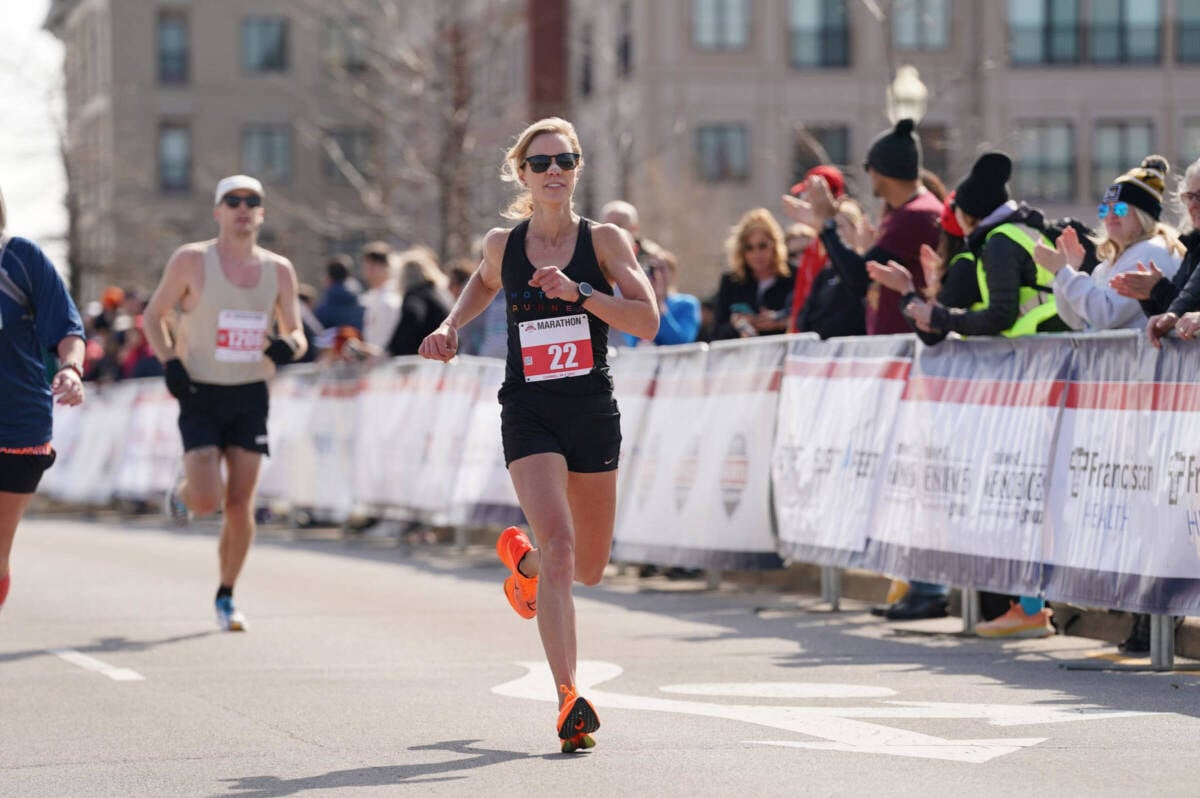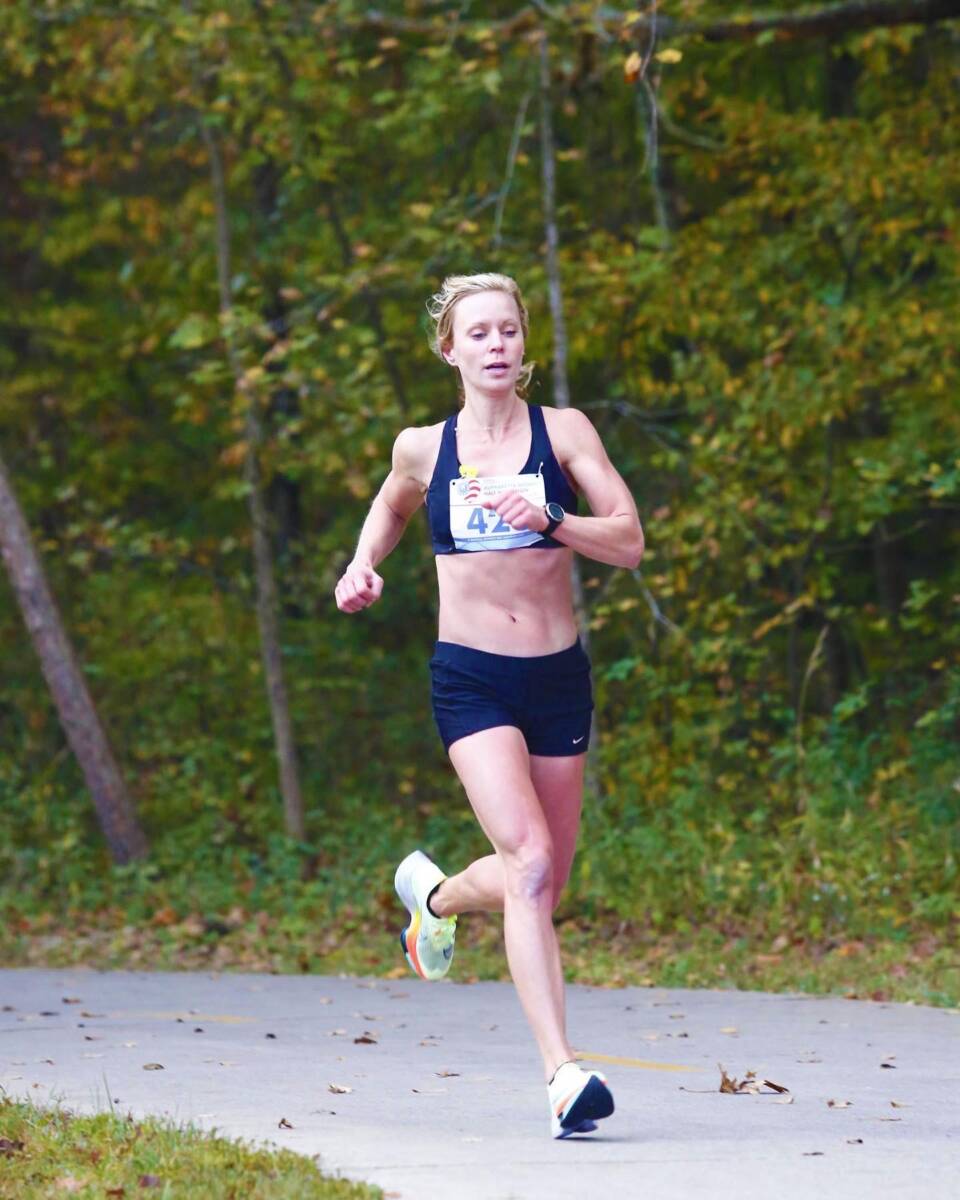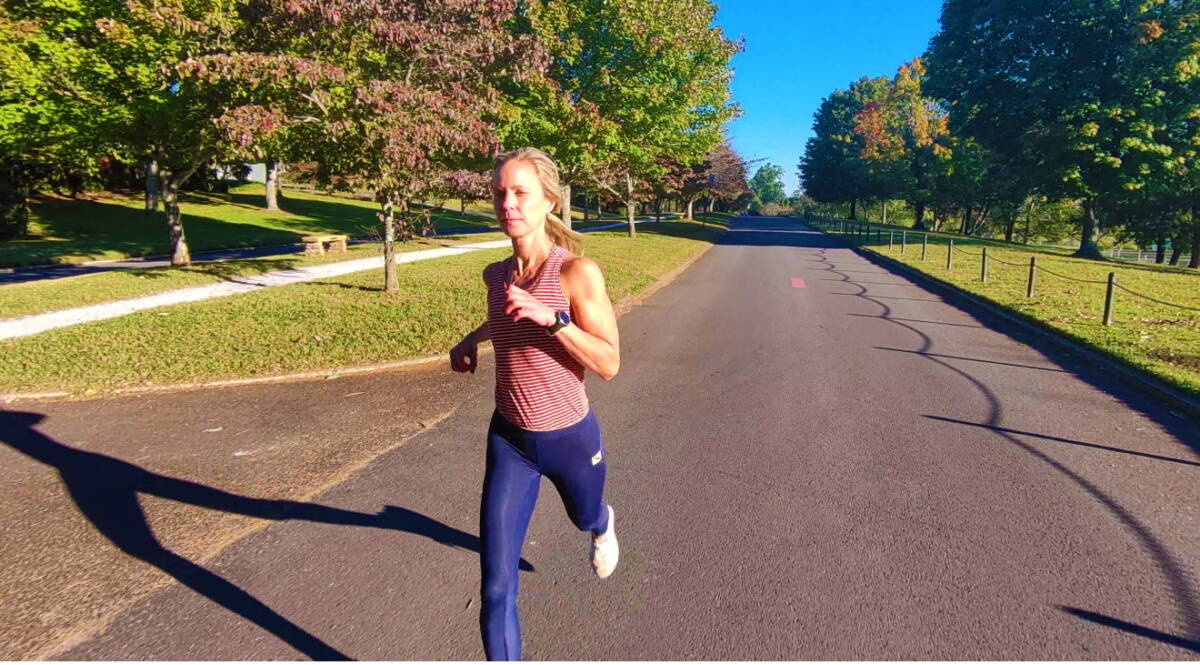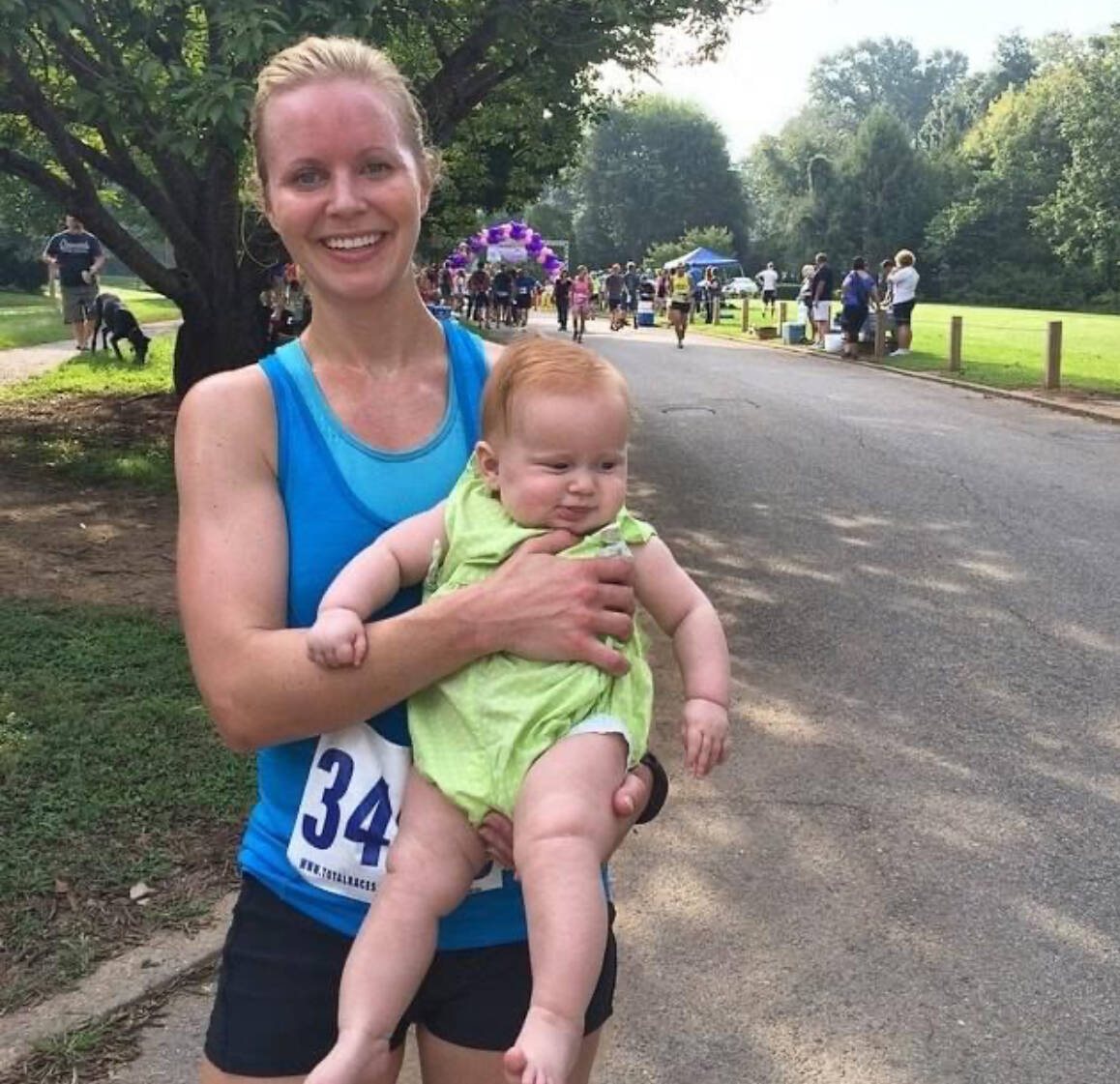Half Marathon PR Pacing Strategy + Half Marathon Pace Chart
A successful half marathon pacing strategy involves going out slower than your race pace so you don’t burn out too quickly. These pro half marathon pacing tips and half marathon race pace chart will help you nail your next half marathon PR.
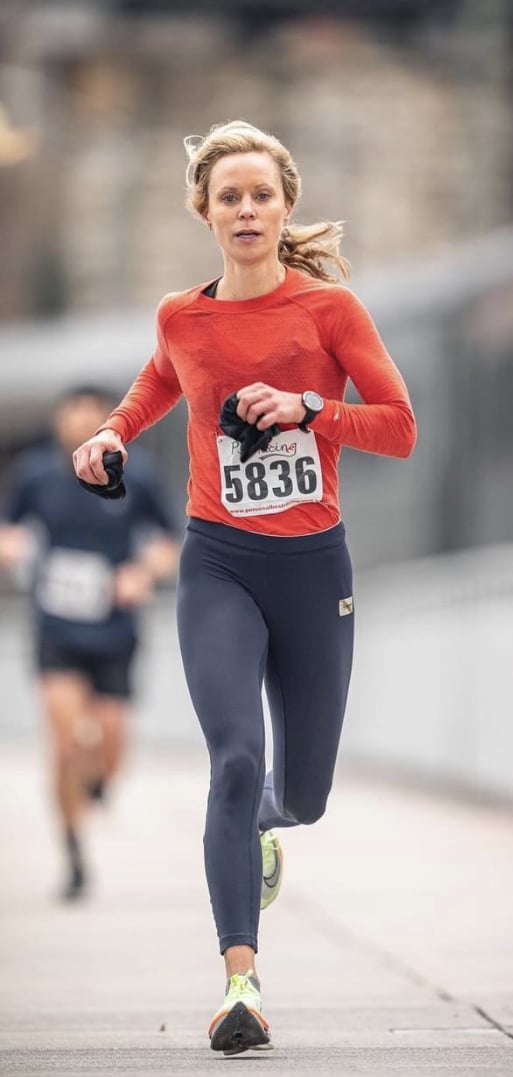
The half marathon is one of the most popular distances. It’s challenging but it doesn’t take over your life like marathon training can or wreck your body. The half marathon requires speed and endurance, and training for a half marathon requires discipline. I want to help you get your half marathon PR with a smart half marathon pacing strategy and half marathon pace chart.
I’ve coached dozens of runners to run big half marathon personal bests. These athletes were consistent in their training while running smart strategies on race day. Indeed, the biggest mistakes runners can make in a half marathon is to go out too fast, run the wrong pace, or go out too slow and have a lot left in the tank. This half-marathon pacing strategy helps you avoid this. So let’s go!
Skip Ahead:
Don’t forget to check out my free half marathon training plans!
How should you pace a half marathon?
If you are running a half marathon with a half marathon goal finish time, here is how I suggest pacing for a half marathon PR. This race strategy has helped dozens of runners run their best.
You essentially break the half marathon up into about 4 sections:
- Warm-up
- Goal Half Marathon Pace
- Pick-up
- Fast finish
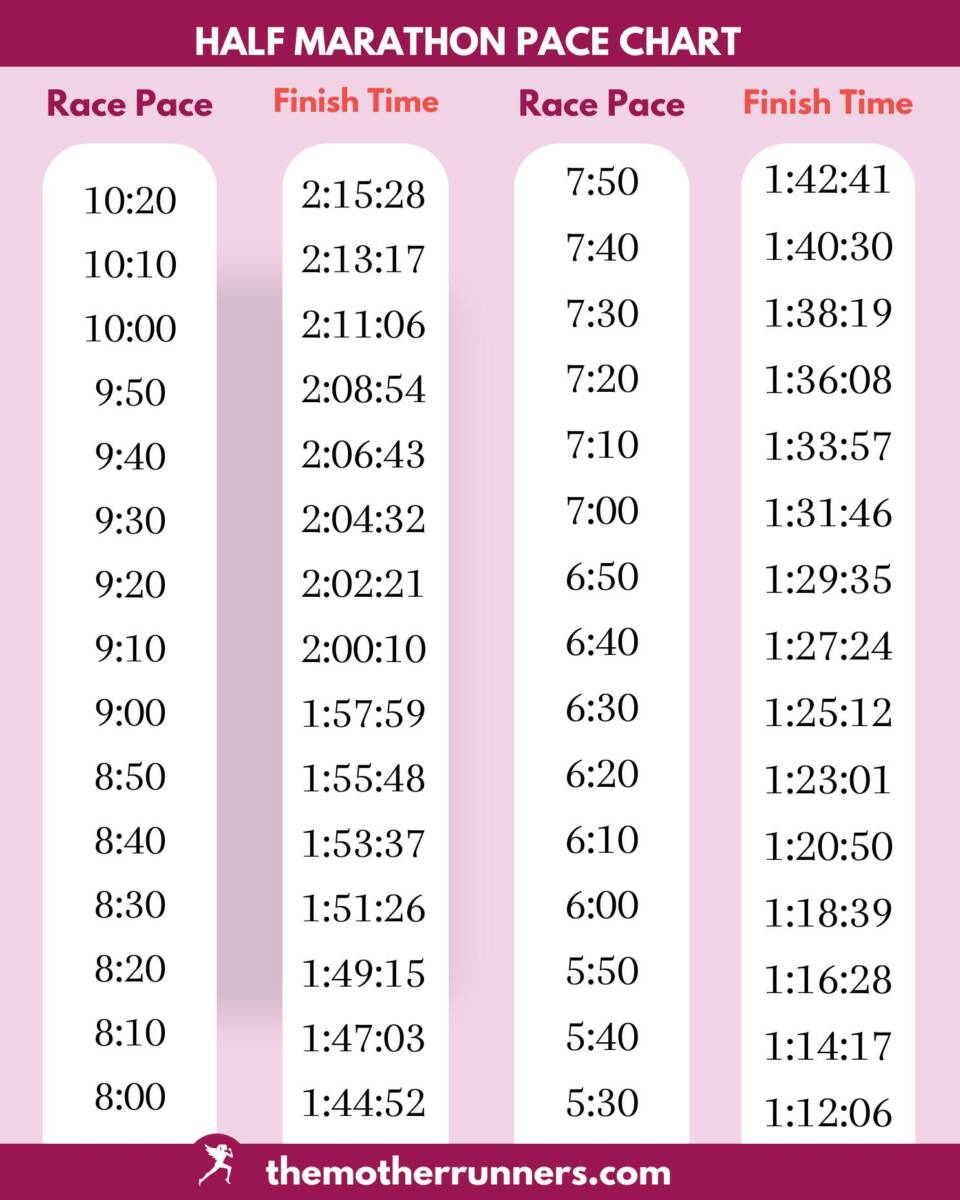
Half Marathon Pacing Strategy
Miles 1-2:
For the first two miles, run your pace about 10 seconds slower than your goal pace (a rate of perceived exertion of about 5/10). This allows your body to warm up and not accumulate lactate too quickly in the blood. This will cause your legs to feel heavy and burn, and your race performance to suffer. A half marathon is not an anaerobic exercise–it is mostly aerobic where you are using oxygen to power your working muscles–so you want to run below your anaerobic threshold (aka not at blazing speed).
The most common reason for people not getting their half marathon goal time is getting carried away with the race day vibes, going out too fast, and blowing up. Don’t let that happen to you!
If you are worried about not hitting your goal race pace, don’t worry. If you go out a bit slower, aiming for negative splits — you will be able to cut past your race time in the final miles of the race. “Banking time” where you go out faster than goal pace NEVER works. Also, running the same pace the entire race also rarely has you run to your potential for most runners.
Miles 3-9:
This is when you settle into your goal pace. After the second mile, start to increase the effort a notch to an RPE of 6/10. You will be breathing a little bit hard, need to focus to maintain effort, but can talk in complete sentences. You run this section at a consistent pace.
It may take about a mile to smooth into this pace and get a rhythm. Find a groove. Then you hold it. This is the part of the race you have been training for where you can find a flow state. You are working hard but not dying. It feels uncomfortably comfortable. You should have practiced this half marathon goal pace so that you know how to lock in and be familiar with what it feels like.
Miles 10-11:
Around mile 10 is when the half marathon starts to feel hard. Your legs may begin to feel tired and your energy may wane. This is the time mantras, your “why”, and mental training kick in.
I tell my athletes to try to pick up the pace to an RPE of 7/10, and if they can’t—aim to maintain effort. Don’t focus on your watch. Instead, try to maintain your RPE. Throwing in surges where you run faster to a landmark or runner ahead of you can actually recruit different muscle fibers and make you feel less tired.
Mile 12-13.1:
This is when it is time to give it all you got. You want to make yourself proud because only YOU know if you gave it your all. Start picking up the pace by a few seconds per mile or to an RPE of 8/10 in the 12th mile.
When you have about a half mile to go, it’s time to turn the dial up to 9/10 then 10/10 to the finish line. Let it all hang out and then be proud of yourself for your effort. And if you got a shiny nice PR, embrace it proudly!
FAQs About Half Marathon Pacing
How do I calculate my pace for a half marathon?
The best way to calculate your half marathon pace is to add about 20 seconds to your 10k pace, 30 seconds to your 5k pace, or subtract 20 seconds from your marathon pace.
If you haven’t run a race recently, I suggest running a 5k time trial as a way to get a ballpark of your half marathon training pace. You can also use Jack Daniels’ running pace calculator to get an idea of your half marathon race pace. I go into details on workouts to help you gauge your marathon pace that are applicable to a half marathon race pace here.
How fast should a beginner run a half marathon?
If you are running a half marathon for the first time and not worried about a specific half marathon time, then anywhere under 3 hours (or a 13:44 per mile pace) is a respectable time. For reference, the average half marathon time for women is 2 hours and 11 minutes (or about 10 minutes a mile) and for men is 1:55 or about an 8:45 min. average pace.
How should a beginner pace a half marathon?
If you are a beginner runner and running a half marathon for the first time, I suggest running your half marathon at your typical average speed on your long runs.I would start out at a comfortable pace where you can hold a conversation. If you are feeling good with 3 miles or 5k to go, you can increase your effort so that you finish strong.
If you want guidance with your running goals including your half marathon goals, check out my run coaching services. How do you pace your half marathons?

